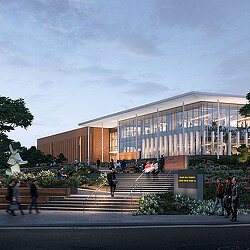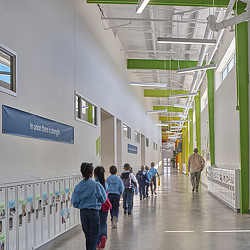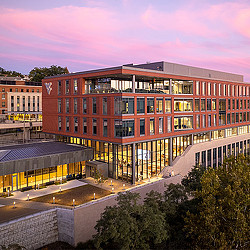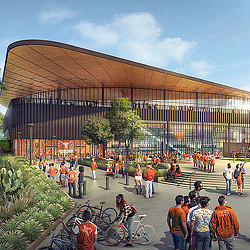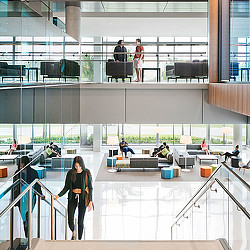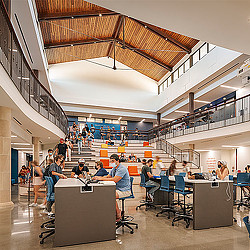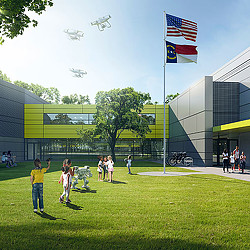5 Ways Educational Anchor Institutions Can Catalyze Economic Recovery
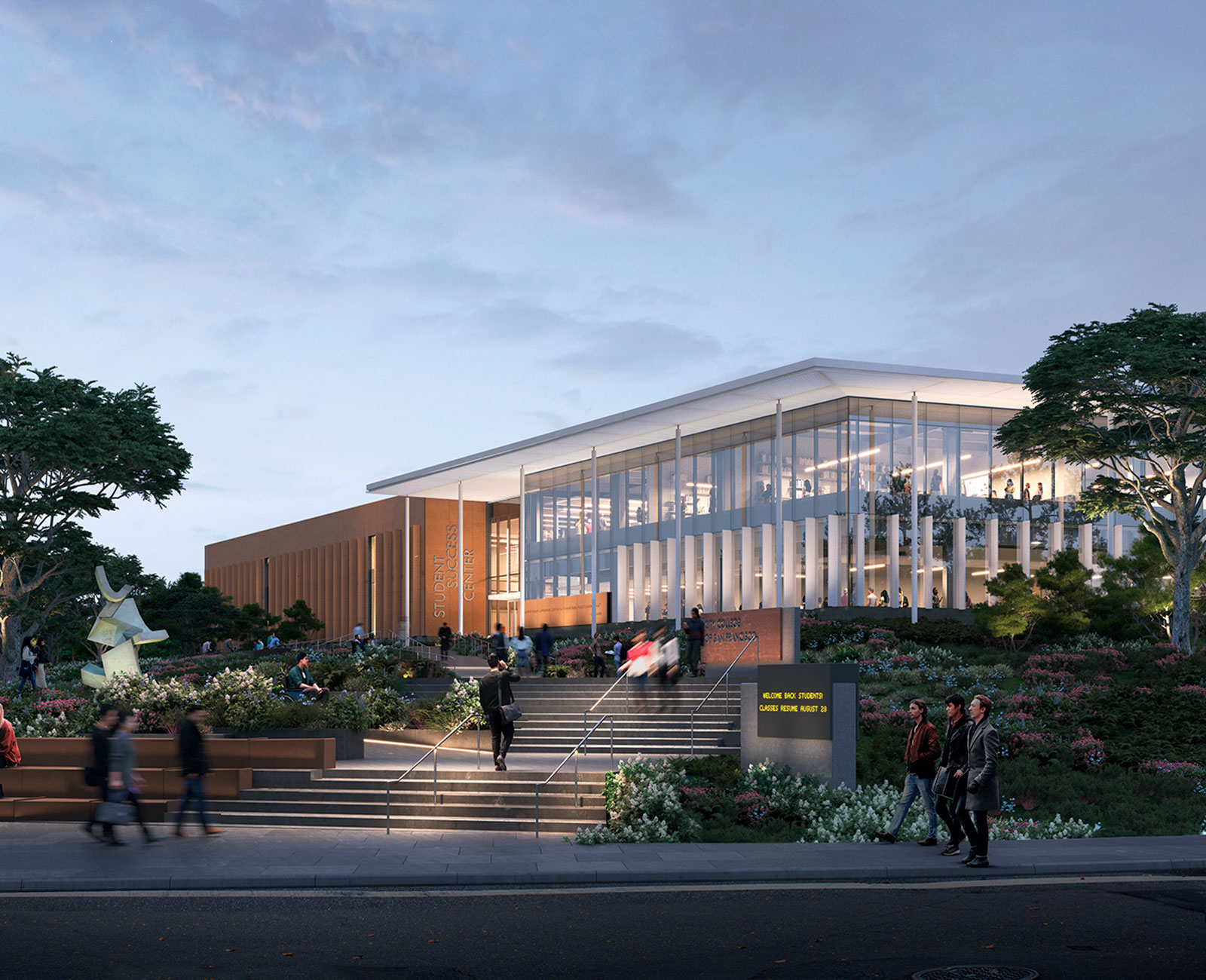
As cities struggle to recover from COVID impacts and a rapidly restructuring economy, conversations around economic recovery have focused on office, retail, and residential sectors. However, one potentially impactful partner deserves more attention: educational anchor institutions.
With their significant assets and resources, educational anchors are poised to offer relief and creative partnerships for their cities. Unlike businesses, which can relocate when their priorities shift, anchor institutions are typically rooted in the community through real estate and community-serving missions, making them an important player in the local economy.
In addition to driving opportunity for students and their families, educational anchor institutions can provide significant multiplier effects to their local economies. With a focus on their anchor mission, colleges and universities can boost the benefits they provide to their local economies — from aligning academics and career counseling with business needs, to local hiring and purchasing, and housing and other development projects supporting local community goals.
College, university, and government leaders and their architects and planners can all help multiply the economic impact of educational anchor institutions when we understand and promote their larger anchor mission. Here are five ways colleges and universities hold the key to strengthening the economy and transforming their communities:
1. Building Skills for the Economy of the Future
The nature of work is changing and so are the skills needed. For example, climate action is driving a shift toward electrification and technology companies are reinvesting in manufacturing to provide components for the digital economy. Our economy needs both innovators and skilled workers, particularly those with some college, but not necessarily a four-year degree. The skills gap is estimated to grow to over 1.5 million in California by 2030, representing both a drag on the economy and lost opportunity for workers in need of living wage jobs.
California community colleges are the ideal partners to address the skills gap, but their enrollment is declining, and completion rates are low. Recent studies show that just one in four institutions is currently in dialogue with business leaders to understand what skills are in demand. However, some leading institutions are partnering with the business community, designing curricula, and advising students to help them align their studies with good jobs after graduation, as well as adding facilities with specialized space designed to boost student success.
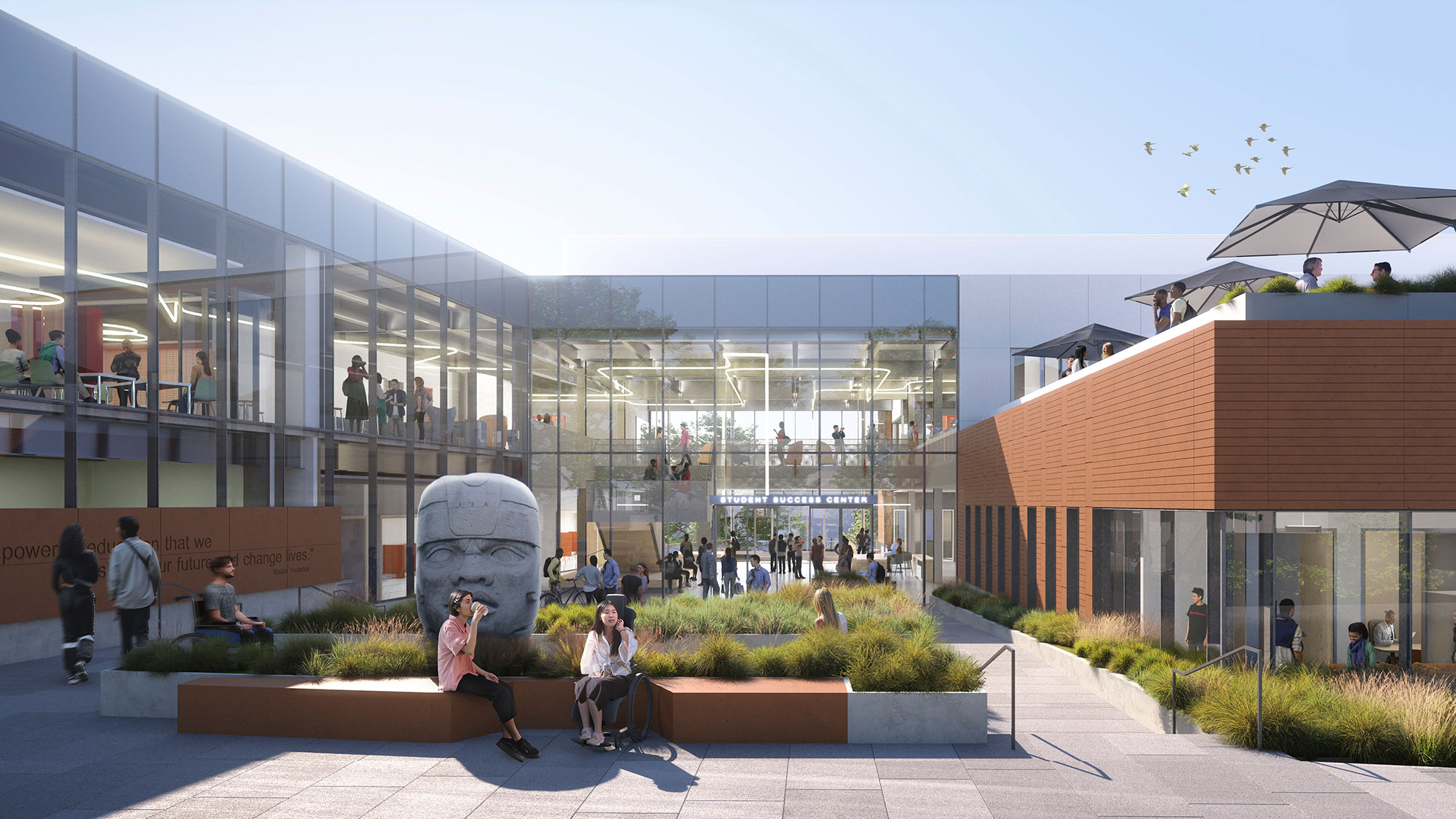

2. Attracting Talent and Hiring Locally
Higher education institutions drive economic growth by attracting talent and fostering new business creation. Based on PitchBook’s 2020 University Rankings, Stanford and UC Berkeley are world leaders in new business startups that receive venture funding. Between 2006 and 2020, UC Berkeley launched over 1,200 startups that garnered over $36 billion in venture funding.

Hiring is another way educational anchors contribute to the economic health of their regions. In the Bay Area, UC San Francisco (UCSF) is the largest public employer, with over 34,000 workers, followed by the City and County of San Francisco. UC Berkeley ranks third, with over 24,000 employees in the area. As part of their anchor mission, UCSF has committed to hiring 10% of new employees each year from underserved communities, removing hiring barriers, and investing in workforce development to create greater economic opportunity for the local community.
3. Affirmative Procurement Supports Local Businesses
Colleges and universities have sizable economic impact, spending over $500 billion on goods and services annually. Communities benefit when that spending is directed towards the local economy, including small and diverse businesses, as it creates multiplier effects and enables wealth to accumulate locally. This is especially important now, as the COVID-19 pandemic disproportionally impacted small and diverse businesses.
UC Davis Health (UCDH) has developed a comprehensive Anchor Institution Mission (AIM) focused on hiring, procurement, investment, and volunteering to improve community health and address racial and economic inequities. For example, UCDH has increased the hospital’s proportion of food from local vendors from 16.5% in 2016 to 40% in 2019, supporting local businesses while focusing on healthy, fresh food.
4. Building Affordable Housing
Colleges and universities that build affordable student housing relieve pressure on local housing markets, while making college more affordable. This is an urgent priority in California, as a recent study found that one in 20 students at University of California (UC), one in 10 students at California State University (CSU), and one in five students at California Community Colleges (CCC) are experiencing homelessness each year.
To help jump-start new student housing at all levels of the California public university system, Governor Gavin Newsom signed SB 169 into effect in 2021, providing $2 billion over three years to build affordable student housing across the state, and establishing these institutions as active partners in urban development and construction. This targeted investment is a win-win for colleges and their communities.
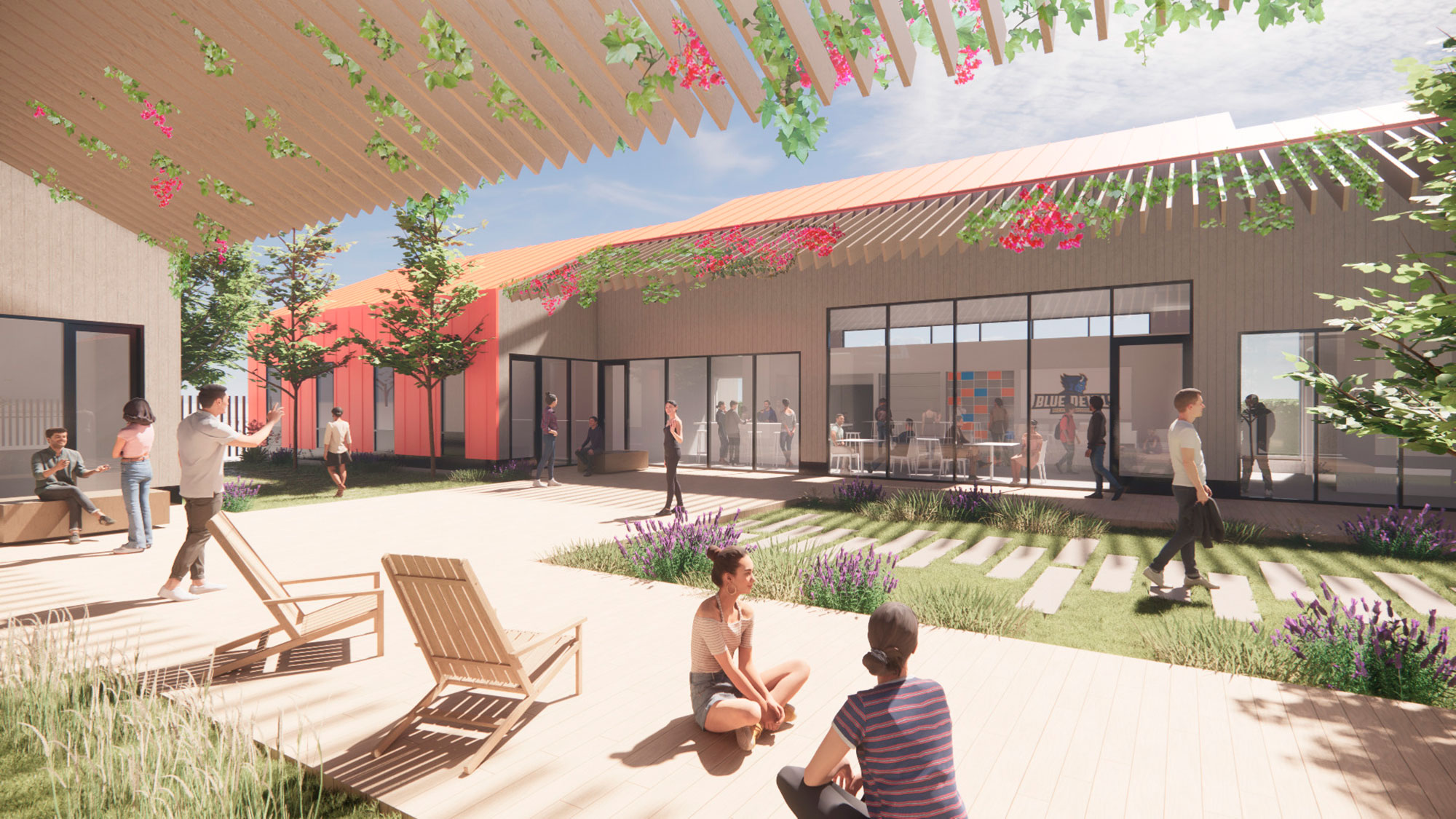
5. Catalyst for Urban Revitalization
Educational anchors help catalyze economic recovery by attracting people and resources to the neighborhoods they inhabit. Once imagined as cloistered places separate from the city, colleges and universities are now actively seeking out synergies with their surrounding communities. Campus edges have become more permeable, and many campus buildings are designed to invite engagement with students and business collaborators, as well as the general public. Satellite facilities remote from existing campuses could play a role in future city planning and design.
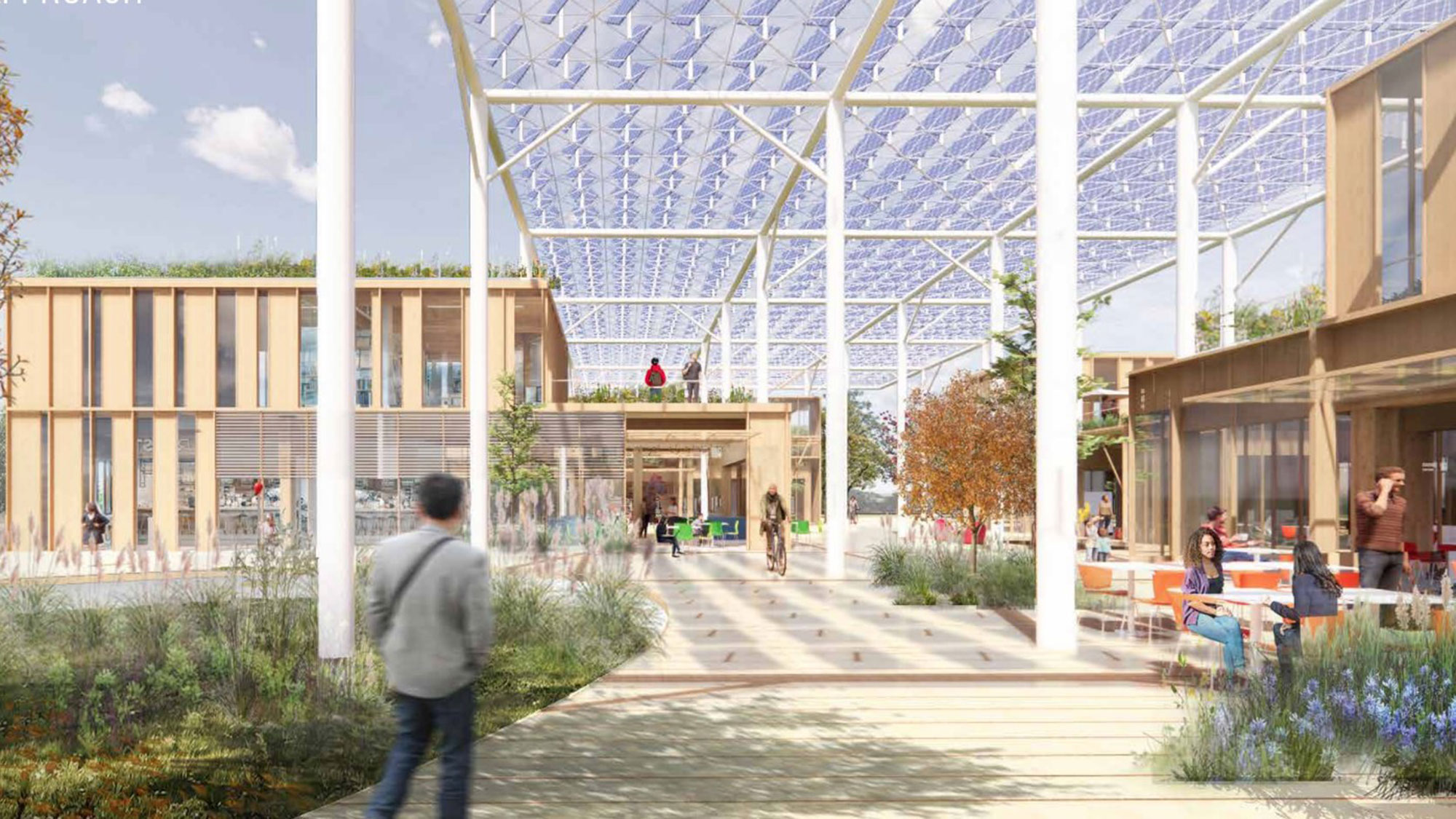
With intentional planning and coordination with others, educational anchors can multiply the benefit they provide to surrounding communities — educating and creating opportunity for students and their families while boosting economic output by attracting talent, launching new businesses, hiring locally, engaging in socially responsible procurement, and developing housing and other shared community assets.
For media inquiries, email .


